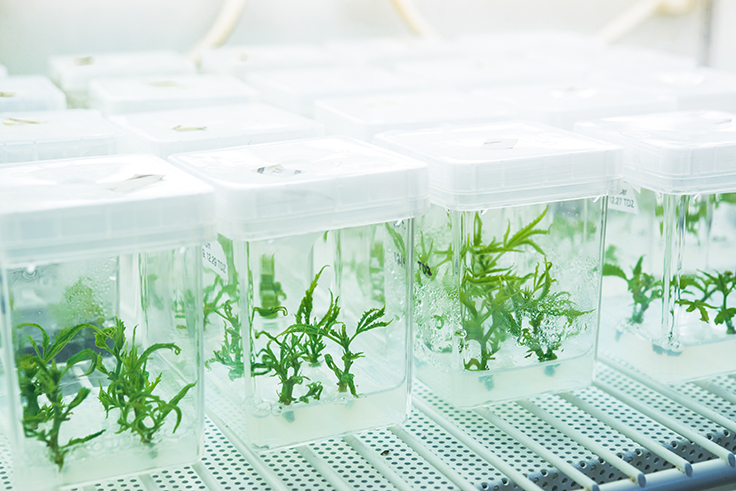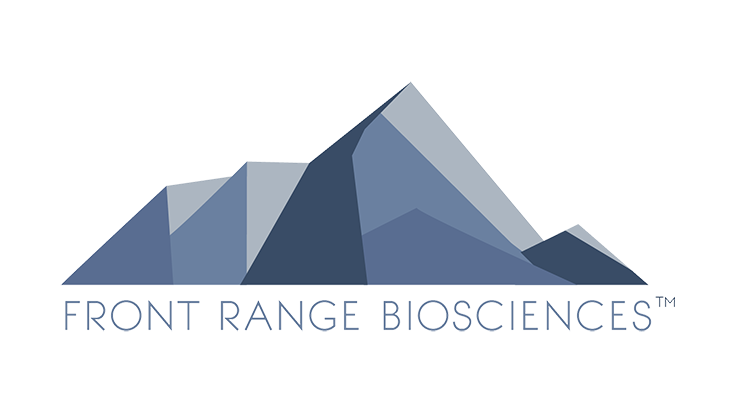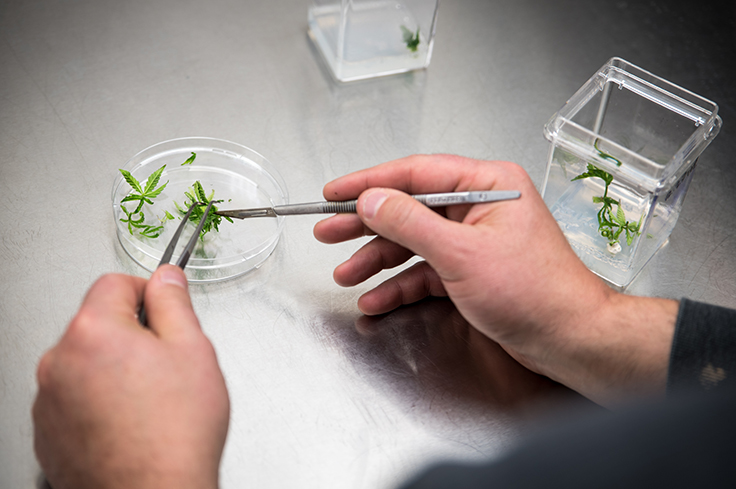Source: cannabisbusinesstimes.com
CEO and co-founder Jon Vaught has partnered with the UC-Davis for the company’s hemp genomics research project.

Small cannabis branches that have been prepared for use in tissue culture are stored in sealed plastic containers.
Front Range Biosciences may be a start-up, but it looks more like an established research company. That’s because the Colorado-based agricultural biotech company has the backing of an acclaimed agricultural research university to help launch a genomics research project to learn more about the medical and nutraceutical uses of cannabis.
The company’s co-founders, Jon Vaught and Nick Hofmeister, both have extensive backgrounds in biotech. Vaught is an organic chemist who has spent most of his career in molecular diagnostics, working in pharmaceuticals and developing technologies for early detection of cancer and food safety. Hofmeister, also the company’s COO, holds an MBA from MIT, and Front Range Biosciences is each founder’s fourth start-up in biotech.
Vaught thinks of cannabis as a commodity crop, associating it with food and medically relevant compounds. His team is working to master cannabis production, taking lessons from the many other agricultural crops that have come before it and trying to improve cultivators’ ability to produce it more efficiently. Vaught said new technologies will allow them to explore new territory in cannabis cultivation.
“We’re very excited,” he said. “It’s not that often that you see prohibition end on a new crop, and the ability to produce it around the world and potentially change things, so it’s kind of a once in a lifetime opportunity.”
Here, Vaught shares with Cannabis Business Times Front Range Biosciences’ goal to breed for disease resistance, specific cannabinoids and more.
Cannabis Business Times: What does Front Range Biosciences’ partnership with UC-Davis entail?
Jon Vaught: Our company has two areas of business. The first is our clean stock program and tissue culture program for the production of baby plants. These are disease-free, pesticide-free, true-to-type plants that come out of our tissue culture program, and then we distribute them through nurseries to farmers. These could be hemp farmers, [or] they could be marijuana farmers. …
The other part of our business is about genetics, genomics [and] breeding new varietals that have improved traits, things like disease resistance, drought tolerance [and] agronomic traits such as plant structure, how it gets harvested—things … that have been bred into other crops that make them more efficient to grow.

Front Range Biosciences' areas of business include its clean stock program and tissue culture program for the production of baby plants, and genetics, genomics and breeding of new varietals.
The relationship with UC-Davis is really driven toward … laying the foundation for our breeding platform and for developing a better understanding of the plant’s genome so that we can drive for better traits. …
In traditional plant breeding, it can take decades. You grow the crops out, you look at their traits, you breed the ones you like, and you do it again the next year, and the next year, and you do that for many, many years until you have a set of stable traits, meaning that when you cross the two plants, you get the same babies, the same offspring, the same progeny, every time. …
A way to really advance research is through academic partnerships. [UC-Davis has] some of the best scientists who are very specialized. … They also have research facilities that have the instrumentation which can often be very, very expensive. … Partnering with a university is a great way to drive the science forward … much faster than trying to do it on your own. …
[UC Davis is] the best ag school in the world. Dario Cantu, the professor we’re working with, is arguably one of the most innovative and best structural genomicists that’s working on plants. He’s done things in plants that other people have not been able to do in terms of the level of understanding and genome mapping that he’s done for some other crops. For us, it was a very unique opportunity to build a partnership and really lay the foundation for a breeding program that will take a couple of years to develop, but this is the first step.
CBT: Can you go into more detail about what the hemp genome will be tested for during this project and some specific traits that you’re looking at?
JV: Being able to improve the disease resistance in this plant and minimize the use of pesticides, I’d say is one of the top priorities.
There are other things that will help make it more efficient to grow, which will reduce its environmental impact. It will allow farmers to compete with dropping prices. We’re seeing commoditization of this crop. … Supply goes up, [and] even though the demand is going up, the quick rise in supply leads to drops in prices, and over time, you see farmers competing with each other to be more efficient as the margins get lower. Anything that can help improve growing efficiency, … [like] disease resistance, is key. Something like drought tolerance, for example. Certain agronomic traits that allow it to be grown more effectively out in the fields and harvested at a large scale. …
Breeding for specific cannabinoids might [also] be medically relevant. … You’ve got compounds like CBD, and there are other cannabinoids, as well, that are even lesser-known [and] that have already shown clinical indications for different diseases. Being able to breed plants that … can create some of these compounds will be absolutely critical for the developing pharmaceutical segment of this market.

Cannabis material is prepared for use in tissue culture.
CBT: What challenges are you anticipating during this project?
JV: There can be all kinds of technical challenges. Just because you’ve done something in another crop, or because you’ve done this same experiment in another situation, doesn’t mean that it’s going to behave the same way this time around. … I’m confident we’ll encounter some challenges along the way in that regard.
Things like the sequencing and the results and the bioinformatics algorithms, [the methods and software tools for understanding biological data], that we apply to map out the genome and understand it [will be challenging]. … If [we could look ahead] 10 years from now when a lot of other researchers have done a lot of work on this, it might be a little more straightforward, but we really are going to get into some uncharted territory and there’s really only a few other groups in the world who have even started to wade into these waters, so there’s just not a lot of information out there. … We’re starting from scratch.
CBT: What is the timeline of this research? Has the project already been started, and when do you anticipate it being completed?
JV: We have already started, and we’re in the very early stages. The first part of the project is … extracting the DNA from the plant material, which … allows us to send DNA to the university for analysis, which stays very, very clear on the legal side of any federal regulations. We simply do a DNA extraction, and even though it’s industrial hemp, which is more protected under the U.S. Farm Bill of 2014, there’s still a lot of concern and … debate going on at the federal level. … We simply do the DNA extraction, and then we’re sending DNA. … That’s the first stage, and … it can be somewhat of a time-consuming process to do it the way we want and to have the right quality-control metrics so the quality of the DNA is good enough for the work we want to do. That’s ongoing right now. We just started … at the end of the summer, and … as we get the DNA samples submitted, … they’ll do the next-generation sequencing work, then there’s the bioinformatics.
Just to collect all of the data could easily take six months. It could take a little longer, depending [if] occasionally things go wrong—it’s science. Then we expect some of the first significant results to come out about the same time. … Once we collect some of that data, we’ll get some analysis done and we’ll have a sense of where we stand, but the full genome mapping and everything else that will complete the project, that could take up to 18 to 24 months before it’s all actually … tied up with a bow and delivered as this completed project.
No comments:
Post a Comment